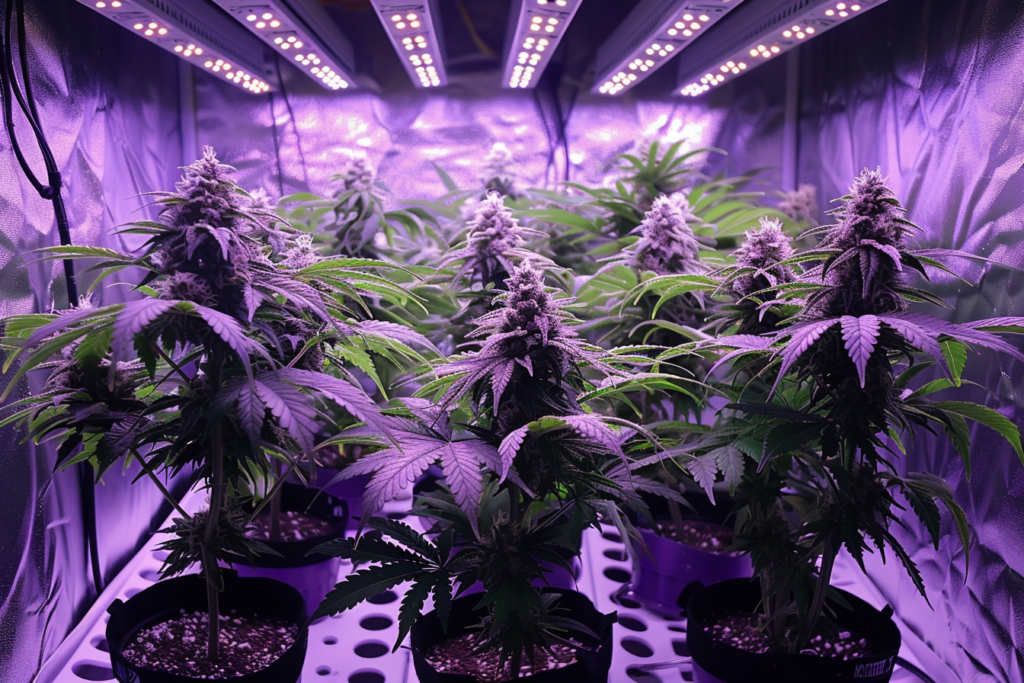
Introduction: What Are Terpenes and Why Do They Matter?
Terpenes are naturally occurring compounds found in a variety of plants, including cannabis, that give them their distinct smells and flavours. In cannabis, terpenes are responsible not only for the plant’s aroma but also for its potential therapeutic effects.
Whether you’ve smelled the refreshing scent of pine needles, the sharp citrus tang of a lemon, or the calming fragrance of lavender, you’ve encountered terpenes. They serve an important biological function for plants by repelling herbivores and attracting pollinators, but for humans, they offer a unique sensory experience and, in some cases, medicinal benefits.
In the cannabis world, terpenes are a key player, influencing the flavour profile and effects of each strain. A strain rich in myrcene, for example, might have sedative effects, while one high in limonene might be more uplifting.
For cannabis users, understanding terpenes opens up new ways to choose strains not just for their cannabinoid content (THC, CBD, etc.), but also for their desired effects and flavours. As we delve into this guide, we’ll uncover the history, discovery, types, and roles of terpenes, along with tips on how to enhance your cannabis experience by understanding them.

The Discovery of Terpenes: A Historical Perspective
The discovery of terpenes dates back to the early 19th century. German chemist Otto Wallach, who studied essential oils and organic compounds, is credited with isolating and identifying the structure of terpenes. His work laid the foundation for understanding how terpenes play a role in both plant biology and human applications.
In 1910, Wallach was awarded the Nobel Prize in Chemistry for his work on terpenes, highlighting their importance in both the scientific community and daily life.
Over time, the understanding of terpenes has expanded significantly. Originally, terpenes were mostly associated with fragrance and essential oils, but now we know they have much broader applications, particularly in cannabis.
Researchers have found that terpenes can work in tandem with cannabinoids like THC and CBD to create the “entourage effect,” where the combination of terpenes and cannabinoids enhances the overall therapeutic potential.
From Wallach’s early work to today’s advanced research, terpenes have evolved from being seen merely as aromatic compounds to playing a major role in how we experience cannabis.

Types of Terpenes and Their Effects
There are over 200 terpenes found in cannabis, but a handful are particularly prominent, each offering unique flavours and potential effects. Here’s a breakdown of some of the most common terpenes:
- Myrcene: Often found in mangoes, hops, and thyme, myrcene has an earthy, musky aroma with a hint of sweetness. It is known for its relaxing, sedative effects and is often found in indica strains. Myrcene is also thought to enhance the absorption of cannabinoids, making it a key player in the overall cannabis experience.
- Limonene: As its name suggests, limonene has a citrusy scent and is commonly found in fruits like lemons and oranges. This terpene is believed to have uplifting and anti-anxiety properties, making it a great choice for those looking for a more energising experience.
- Pinene: Present in pine needles and herbs like rosemary, pinene has a fresh, forest-like aroma. It’s known for its potential to help with memory retention and alertness, and it may even counteract some of the short-term memory issues associated with THC.
- Linalool: Floral and calming, linalool is found in lavender and is often used for its anti-anxiety and sedative effects. It’s frequently present in strains associated with relaxation and stress relief.
- Caryophyllene: Unique among terpenes because it also interacts with CB2 receptors in the body, caryophyllene is known for its spicy, peppery aroma. It’s thought to have anti-inflammatory and pain-relieving properties.
Understanding these common terpenes allows cannabis users to select strains based on their desired effects and flavours. Whether you’re looking for a strain that helps you unwind or one that boosts your energy, knowing the terpene profile can guide your choice.
The Role of Terpenes in Cannabis: The Entourage Effect
Terpenes don’t just influence the flavour and aroma of cannabis; they also play a crucial role in its effects. The entourage effect refers to the idea that terpenes and cannabinoids work together synergistically to enhance the overall experience and therapeutic benefits.
For example, a strain high in THC and myrcene may have a more sedative effect, whereas a strain with THC and limonene may offer a more energising experience.
This synergy between terpenes and cannabinoids is one of the reasons why whole-plant cannabis products are often considered more effective than isolates. By selecting cannabis strains based on both cannabinoid content and terpene profile, users can tailor their experiences to meet their specific needs, whether it’s for relaxation, creativity, pain relief, or focus.

How to Enhance the Terpene Profile of Your Cannabis
For those looking to maximise the terpene content in their cannabis, there are several ways to enhance the profile. First and foremost, the quality of the growing environment plays a major role. Terpenes are sensitive to environmental factors such as light, temperature, and soil quality. Organic growing methods that prioritise nutrient-rich soil and natural light can significantly boost terpene production in cannabis plants.
Curing and storage also play an important role in preserving terpenes. After harvest, cannabis needs to be properly cured in a controlled environment to ensure the terpenes don’t degrade. Keeping your cannabis stored in a cool, dark place in an airtight container will help maintain the terpene profile.
For concentrate users, terpene additives are also available on the market. These products allow users to boost the terpene profile of their extracts or vapour oils, giving them more control over the flavour and effects of their cannabis.

Terpenes Beyond Cannabis
Terpenes may be a big deal in the cannabis world, but they’re found in everyday life too. Essential oils are a prime example of how they’re are used in aromatherapy. The calming effects of lavender essential oil, for instance, come from its high linalool content, while the energising properties of citrus essential oils come from limonene.
Terpenes are also used in perfumes and cleaning products. The sharp, fresh scent of pine-based cleaning solutions comes from pinene, while the refreshing scent of many household products comes from limonene. Terpenes are even found in the food industry as natural flavour enhancers in beverages and snacks. This shows that terpenes are more than just a part of cannabis—they’re part of everyday life.
How to Choose Cannabis Strains Based on Terpenes
Choosing a cannabis strain can often seem like a daunting task, but selecting based on terpenes makes it easier to pinpoint the experience you’re looking for. Start by asking yourself what effects you want to feel. Do you want to relax, focus, or get energised? For relaxation, choose strains rich in myrcene or linalool. If you’re looking for an energy boost, opt for strains high in limonene or pinene.
Also, consider the flavour profile you enjoy. If you like earthy, spicy notes, a strain high in caryophyllene might be right for you. On the other hand, if citrus or floral flavours appeal to you, look for strains high in limonene or linalool.
Terpenes and Therapeutics: What the Research Says
Research is growing, and early studies are shedding light on the potential therapeutic benefits of these compounds. For instance, myrcene is being studied for its anti-inflammatory properties, while limonene shows promise as an antidepressant and anxiety-reducer.
Pinene has potential bronchodilator effects, meaning it could assist in opening up airways and helping with conditions like asthma. Caryophyllene has been found to interact with cannabinoid receptors, providing potential for pain relief and anti-inflammatory effects. While more research is needed to fully understand how terpenes interact with our bodies, the early findings suggest they could be a valuable part of cannabis-based therapies.
The Future of Terpene Research: What’s Next?
As our understanding continues to grow, so too does the potential for their use in medical treatments and customised cannabis products. In the future, we may see cannabis products that are specifically tailored to enhance or target certain effects based on their terpene profile. This could lead to more personalised cannabis experiences, whether for recreational or medicinal use.
Additionally, terpene research may extend beyond cannabis. Scientists are investigating how terpenes could be used in pharmaceuticals, skincare, and even in treatments for mental health conditions like anxiety and depression.
Conclusion: Why Terpenes Matter
Terpenes are more than just aromatic compounds—they are a fundamental aspect of the cannabis experience. By understanding how they interact with cannabinoids through the entourage effect, users can better tailor their consumption to their preferences and needs, whether it’s for flavour, relaxation, or therapeutic benefits.
As research continues to uncover the many uses and benefits of terpenes, both within cannabis and beyond, we can expect to see even more opportunities to customise our experiences with this fascinating family of compounds.
For cannabis consumers, learning about terpenes opens up a world of possibilities, allowing for more informed decisions when choosing strains or products. Whether you’re a connoisseur seeking to enhance your knowledge or a beginner just getting started, embracing terpenes will deepen your appreciation for the complexity and potential of cannabis.

